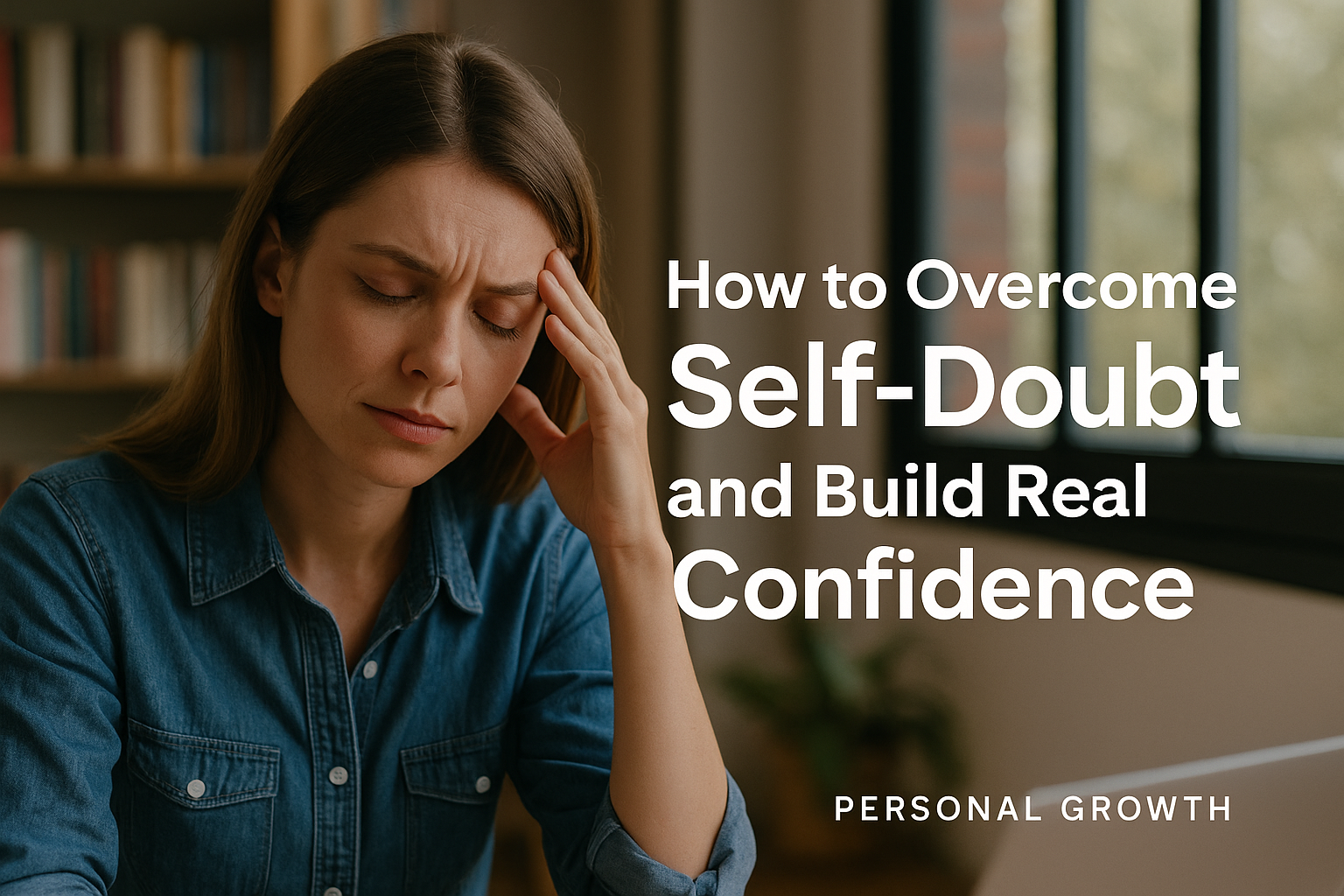Self-doubt can be one of the biggest obstacles to personal growth. It whispers, “You’re not ready,” “You’re not good enough,” or “What if you fail?”
But here’s the truth: everyone experiences self-doubt. Confidence isn’t about eliminating it—it’s about learning how to act in spite of it.
In this article, you’ll learn practical, science-backed strategies to overcome self-doubt and build real, grounded confidence from the inside out.
Why We Doubt Ourselves
Self-doubt often comes from:
- Fear of failure or rejection
- Past mistakes or criticism
- Unrealistic standards (comparison, perfectionism)
- Lack of experience or clarity
- Negative inner dialogue
It’s a natural response when stepping outside your comfort zone. But it doesn’t have to control your choices.
1. Separate Feelings From Facts
Just because you feel unqualified doesn’t mean you are. Self-doubt often exaggerates danger and downplays your strengths.
Next time it shows up, ask:
- What is the evidence this doubt is true?
- What would I say to a friend feeling this way?
- Have I done something similar successfully before?
Ground your thinking in facts, not fear.
2. Take Imperfect Action
Confidence doesn’t come first—it’s built through action.
- Start the project
- Apply for the job
- Speak in the meeting
- Launch the idea
- Record the video
Every action becomes evidence that you’re capable. Momentum shrinks fear.
3. Redefine What “Confidence” Really Means
Confidence isn’t loud, arrogant, or fearless. True confidence looks like:
- Trusting yourself to try
- Knowing you can handle discomfort
- Accepting that failure is part of growth
- Showing up as you are, not who you think others want you to be
Confidence grows when you stop chasing perfection.
4. Build a Personal “Wins List”
Your brain tends to focus on what’s missing or wrong. Fight that bias by keeping a list of:
- Accomplishments (big or small)
- Positive feedback
- Times you took a risk and survived
- Challenges you’ve overcome
Review this list regularly—especially on doubtful days.
5. Use “Yet” to Shift Your Self-Talk
Fixed mindset: “I’m not good at this.”
Growth mindset: “I’m not good at this yet.”
Add “yet” to your inner dialogue to reframe doubt as a work in progress.
Other empowering phrases:
- “I’m learning.”
- “This is uncomfortable—but not dangerous.”
- “I can do hard things.”
- “Progress, not perfection.”
6. Practice Confidence in Safe Spaces
Confidence is like a muscle. Start small, and build strength over time.
Examples:
- Speak up in a small group
- Share your ideas with a friend
- Post something meaningful online
- Take one small social or professional risk per week
Each win builds the belief: I can handle this.
7. Protect Your Confidence With Boundaries
Certain environments or people fuel self-doubt.
- Limit time with constant critics
- Reduce social media comparisons
- Say no to projects that drain your energy
- Build relationships with people who challenge and support you
Confidence thrives in supportive soil.
Final Thought: You Don’t Need to Feel Ready to Begin
Self-doubt is not a stop sign. It’s a signal that you’re stepping into growth.
You don’t need to feel brave to act brave. You don’t need to silence doubt to make progress. You just need to take the next step—with courage, not certainty.
Confidence isn’t built overnight—but it is built. One action, one win, one brave moment at a time.

